When he offered to host me, I offered Said Achmiz the opportunity for me to pick a topic to write on. He selected Russian battleships, and I found a really good deal on a copy of Stephen McLaughlin’s Russian & Soviet Battleships, the standard source on the subject, so settle in for a tale, that like most tales from Russian history, began with bright hopes, and subsequently fell apart.1
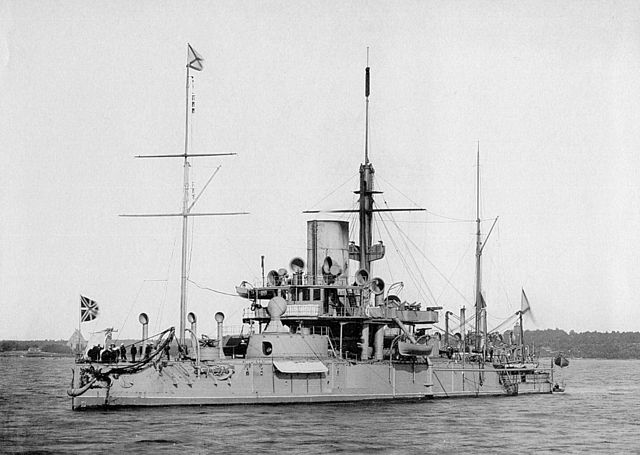
Petr Velikii, the first Russian battleship
The first Russian battleship was Petr Velikii (Peter the Great). She was essentially a breastwork ironclad, with a light structure forward. Armament was 2 twin 12″ turrets, 6 4-pdr guns and a bunch of spar torpedoes used in place of a ram. She was laid down in 1870 and completed in 1876 after significant design changes, which would be a recurring theme in Russian construction. Her initial Russian-built machinery was badly flawed, and she had to be sent to Britain to be re-engined in 1881. She never saw war service, and was under conversion to a training ship when the Russo-Japanese war broke out. In various auxiliary roles, she survived until 1959, when the communists finally scrapped her.
Petr Velikii was designed by Admiral A. A. Popov, who is better known for designing some of the the strangest armored warships of all time. Though not technically battleships, I would be remiss to not discuss them.
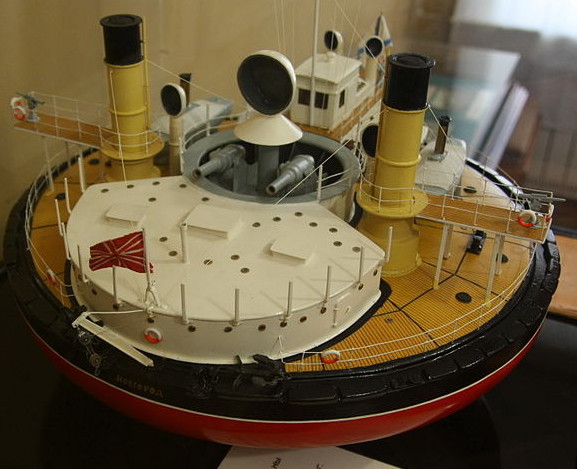
A model of the monitor Novgorod
A pair of coastal-defense monitors, Novgorod and Vitse-admiral Popov, were built for service in the Black Sea. They were circular, with 6 shafts each. In theory, this makes the most efficient possible use of armor, and gives good fields of fire for the guns. In practice, they were slow and had some controllability problems, but were apparently reasonably effective. Stories of their utter uselessness are common, but apparently untrue.
These ships were followed by the use of an elliptical hull for the Imperial yacht, Livadiia, which apparently had solved many of the seakeeping problems that plagued the monitors. However, plans for elliptical-hulled battleships were thwarted when Emperor Aleksandr II was assassinated, and Popov fell from favor under the new Emperor.
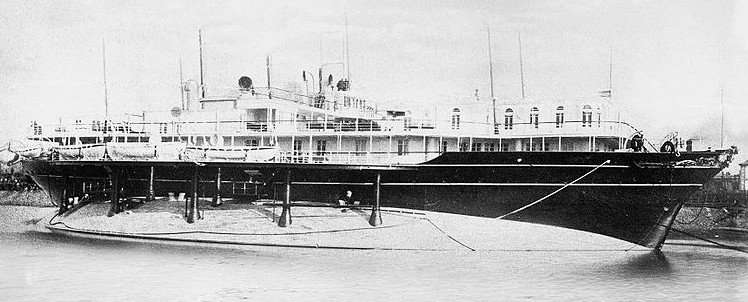
The Imperial Yacht Livadiia
At this point, we need a brief detour into Russian naval geography. The Russians had two main fleets, in the Baltic and Black Seas. The Turkish Straits were closed to Russian warships by treaty, so any ships for the Black Sea had to be built there and stay there. Ships deployed to the rest of the world, most notably the Far East, were built in the Baltic and sailed out.
Petr Velikii was not followed by another battleship for 13 years, as the Russian Navy focused its limited funds on commerce-raiding cruisers until the early 1880s.
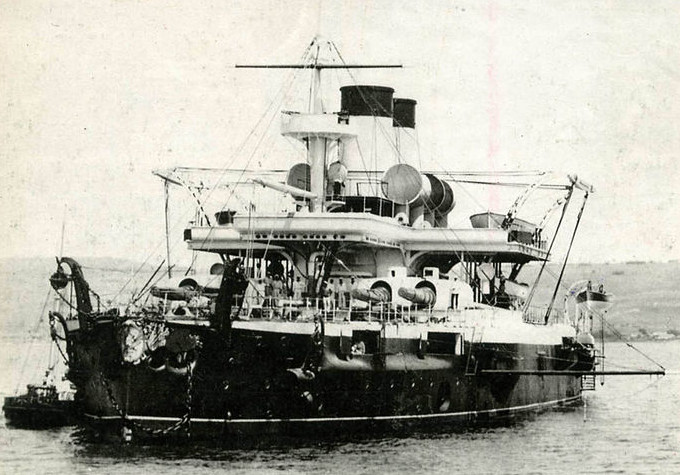
Chesma, of the Ekaterina II class
The first class of Black Sea battleships, the three-ship Ekaterina II class, exemplify the promise and problems of Russian battleship design. The Russians placed great emphasis on ramming, and wanted maximum forward firepower. They also wanted ships capable of high-angle fire in a bombardment role,2 which meant disappearing mounts, where the guns folded back within the barbette structure. They originally planned on 3 15″ guns, although they were not ready in time, and twin 12″ mounts were substituted. The mounts were arranged in a triangular redoubt, two side-by-side forward, one aft.
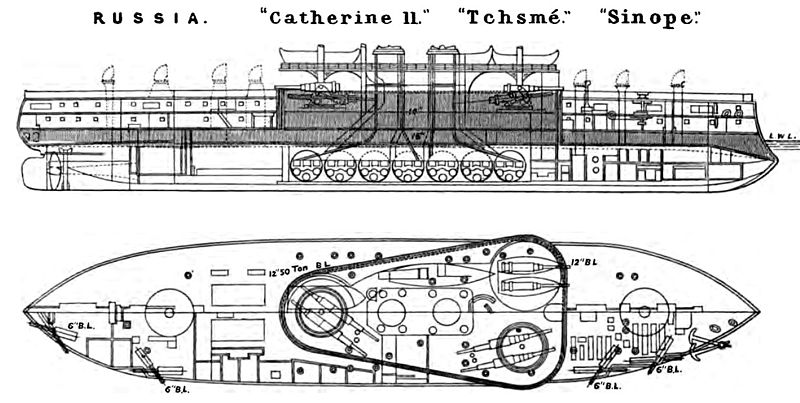
A diagram of the Ekaterina II class
This was an interesting design, if a bit odd to modern eyes. But problems soon began. The Russians soon decided that they didn’t want the disappearing mounts, although Ekaterina II was too far advanced to make the change. Sinop was the least advanced of the three, and it was decided to narrow her redoubt, as the new mountings took up less space than the original ones. However, this wasn’t the end of things. Soon, the Russians developed a 12″/35 gun. It replaced the 12″/30 on the Chesma, the third unit of the class, but was never fitted to Ekaterina II or to Sinop. In the former case, the disappearing mounts wouldn’t fit it, and in the later, the new redoubt was too narrow. Chesma also had problems, with her unbalanced turrets causing the ship to list when they were trained to the beam.3 It took 6 to 7 years for each to be completed (construction ran 1883-1890), and all three were approximately 10% overweight, as just about every piece of the ship came out heavier than expected.
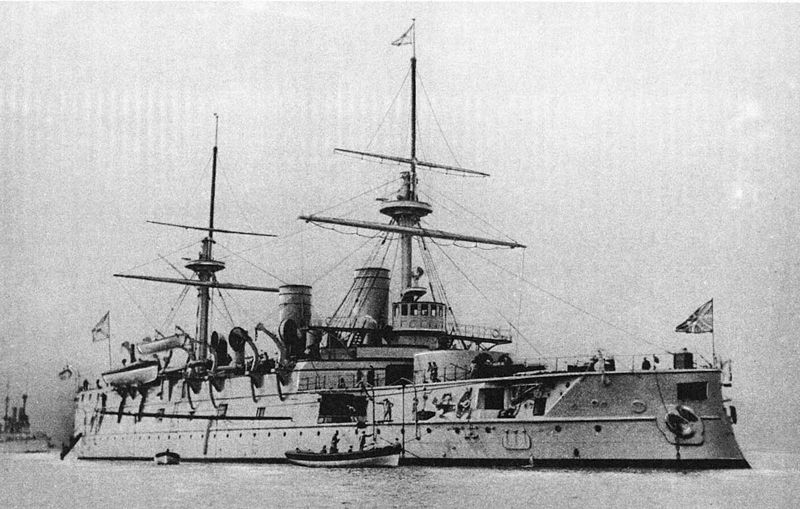
Imperator Nikolai I
In the Baltic, there wasn’t even a pretense of standardized design. Imperator Aleksandr II was essentially a central battery design (4x9″, 8x6″) with a single barbette (2x12″) forward.4 Again, great weight was placed on ahead fire for ramming situations. Imperator Nikolai I was a close relation, but carried a proper turret forward in place of the barbette. The third, Gangut, was smaller and had only one 12″ and four 6″, but was otherwise similar. She was sunk after ripping her bottom out on a shoal in 1897, due to poor workmanship compromising watertightness and being well over her design weight, which made her more vulnerable to flooding as structure not designed to be watertight was immersed.
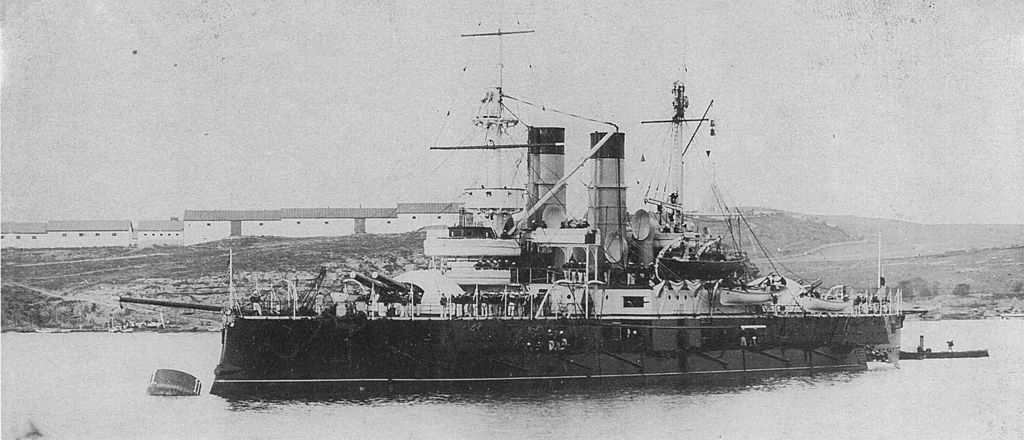
Dvenadtsat Apostolov
In the Black Sea, things were also not going well. Dvenadtsat Apostolov (Twelve Apostles), the next ship built there, was totally redesigned after construction commenced, replacing the planned battery of 8 9″ guns with 4 12″ and 4 6″, although in roughly the same locations (2 barbettes and a casemate). An amusing quirk was that the 12″ guns couldn’t be loaded if the ship was heeling more than 5 degrees.
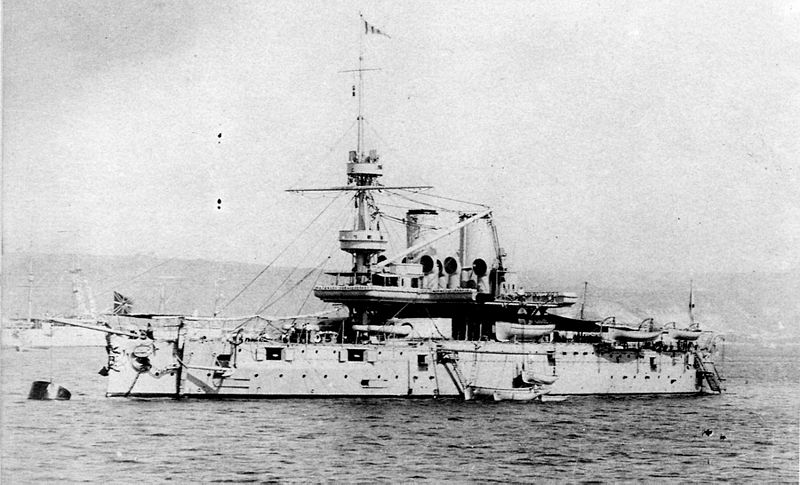
Georgii Pobedonosets
In 1887, before the next ship was ordered, the Russians decided that all future ships should have turrets instead of barbettes. In 1889, a slipway in the Black Sea became available thanks to the launch of Sinop, and a half-sister of the Ekaterina IIs was ordered, barbettes and all, to fill it. This may have been a result of the need to maintain work in the shipyard to avoid the loss of skilled workers,5 but a variant with turrets was rejected for being about 500 tons overweight. The modifications allowed the 12″/35 guns to be fitted in the narrower barbettes of Sinop. Various steps were taken to solve the overweight problems that had plagued the Ekaterina IIs, but the ship, Georgii Pobedonosets, was still 7.8% overweight. Worse, one of the weight-saving strategies was to narrow the belt. This meant that while the Ekaterian IIs had 13″ of belt above the water at full load, Georgii Pobedonosets had only 6″.
These ships all belonged to the era before the Royal Sovereign class redefined the battleship, although one of the proposed alterations to Georgii Pobedonosets, after she was already under construction, of course, was to rebuild her along the same lines. Russia soon adapted her building program, while continuing her tradition of building ships slightly differently. An amazing number of clever and unusual ideas came out of Russia during this period, although many of them were very difficult to implement. In fairness, the British and French had many of the same problems in this era, including ships completing overweight, and lots of good ideas that simply didn’t work.
1 I’m using McLaughlin’s transliterations of Russian words. These may not match those used elsewhere. I regret any confusion. ⇑
2 This requirement was driven by the possibility of having to force the Turkish Straits. ⇑
3 The American Indiana class had similar problems. ⇑
4 It was fitted with a thin hood, as were many Russian battleships of this era. I’ll admit that these are properly barbettes with hoods, and not turrets, as the hoods were usually 2.5″ or so, much thinner than contemporary turret armor. See here for a full discussion of this issue. ⇑
5 This was and is a common problem in naval construction. ⇑

Russian battleships part 1 is up at Naval Gazing.